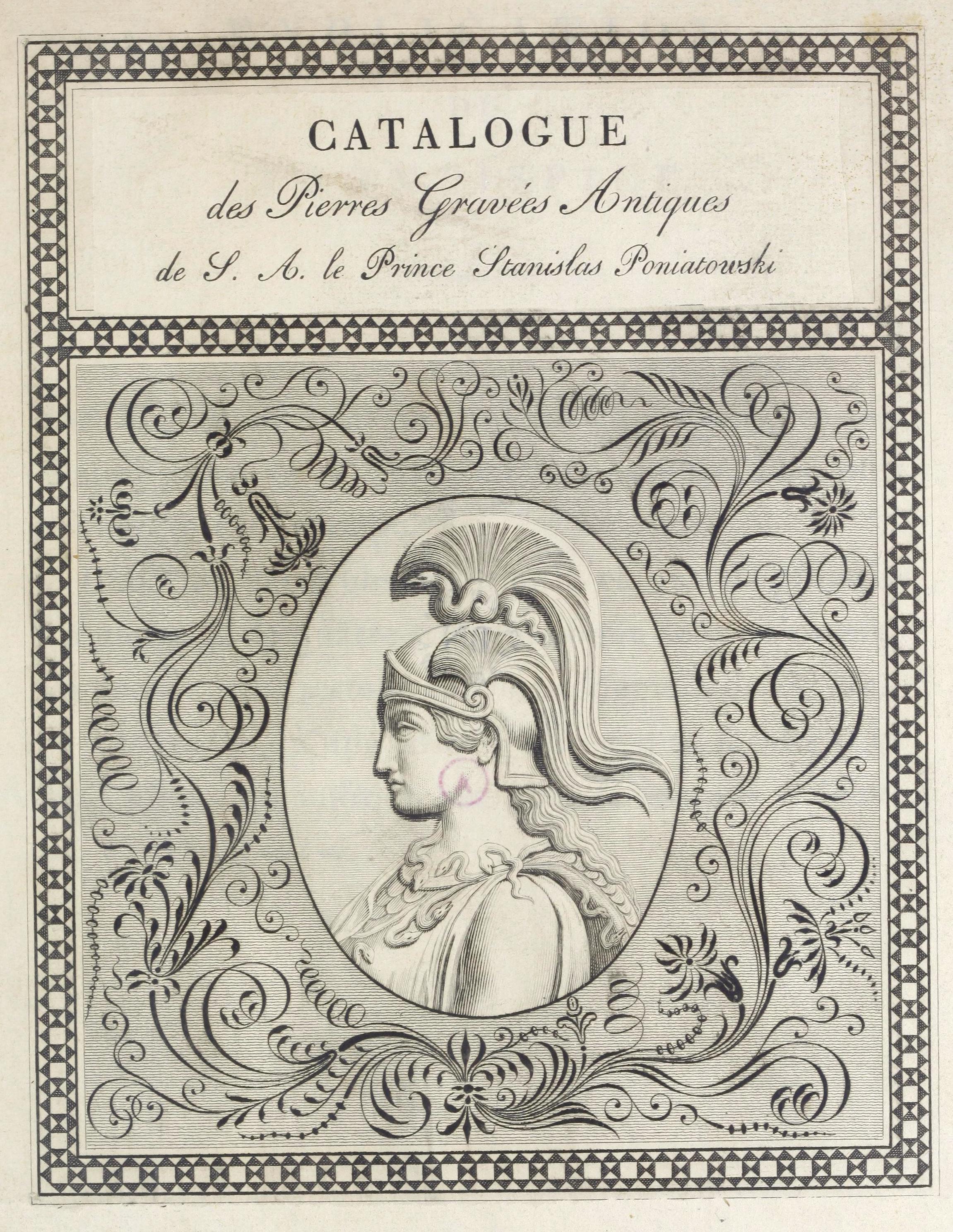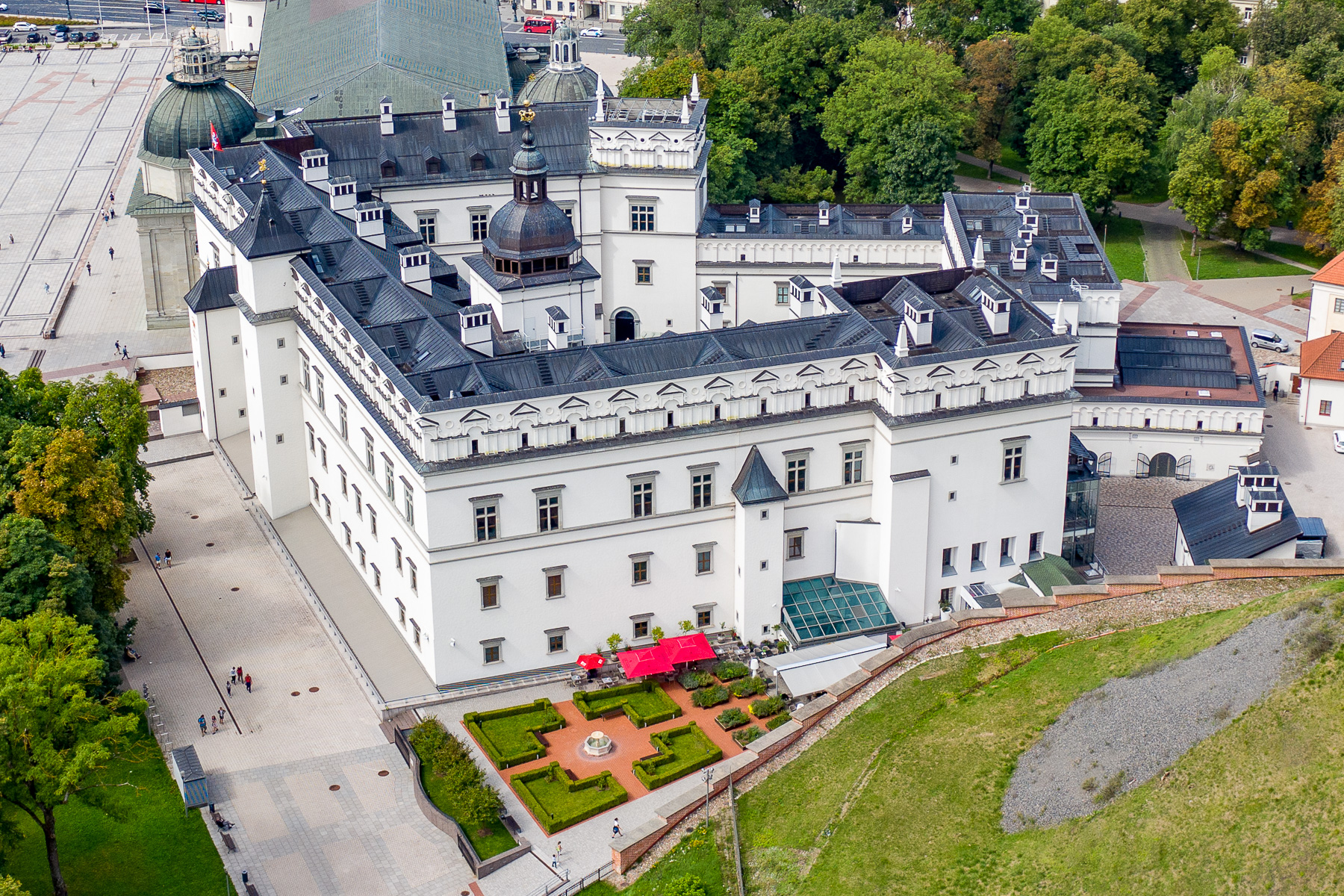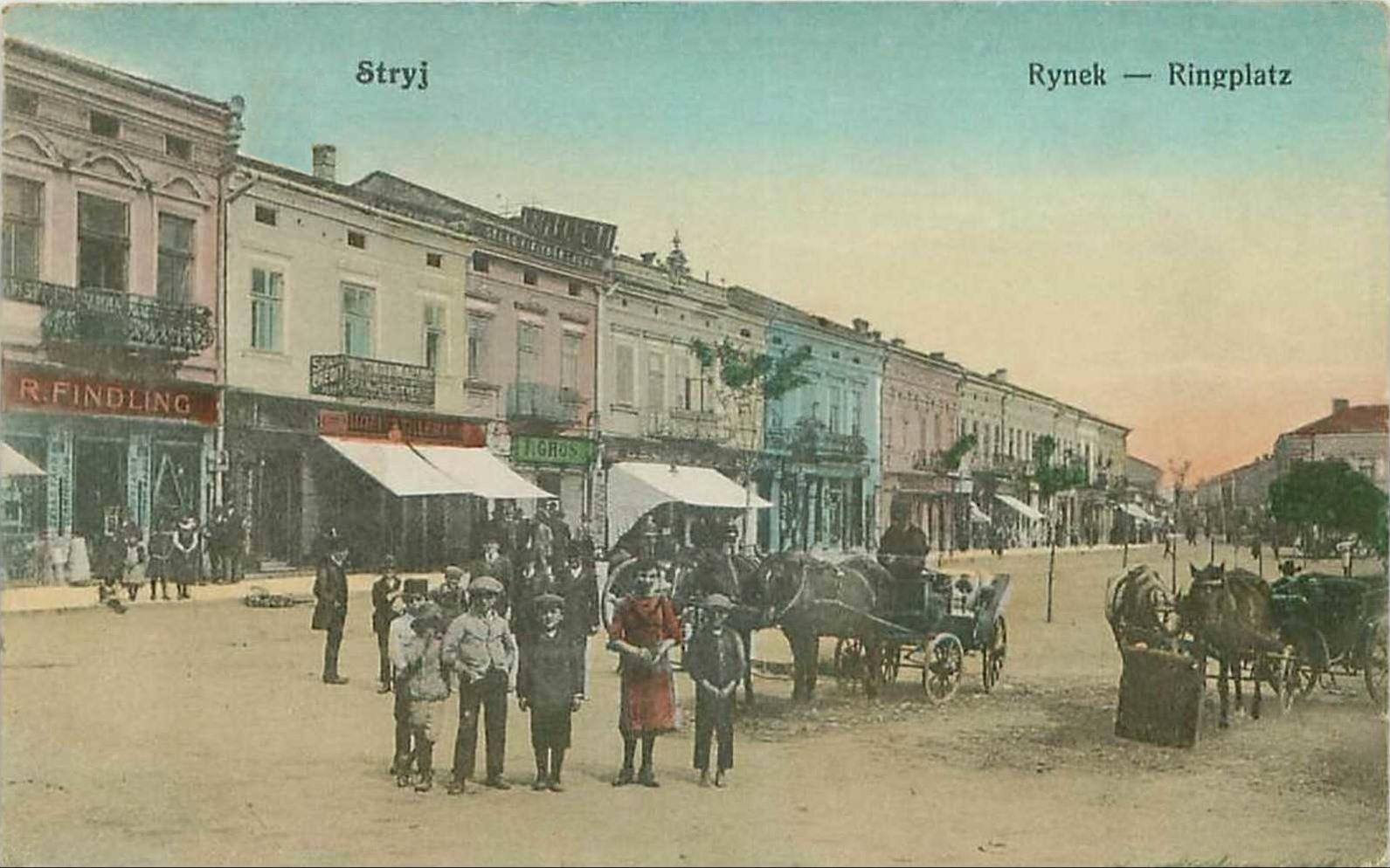|
Stanisław Poniatowski (1754–1833)
Prince Stanisław Poniatowski (November 23, 1754 – February 13, 1833) was a Polish nobleman, politician, diplomat, a member of the wealthy Poniatowski family and a nephew of the last king of Poland, Stanisław II Augustus. He was the official Commander of the Royal Foot Guards regiment directly responsible for the monarch's life as well as the Grand Treasurer of the Grand Duchy of Lithuania (1784–1791) and Governor of Stryj, which made him a key figure in Poland during the Age of Enlightenment. Early life Stanisław was the son of Apolonia Ustrzycka and Polish Prince Kazimierz Poniatowski (1721–1800). His mother, a daughter of Bazyli Ustrzycki, castellan of Przemyśl, was the widow of Prince Antoni Lubomirski. His father was Deputy Chamberlain of Lithuania (1742–1773), Commander of the Royal Army and a knight of the prestigious Order of the White Eagle, awarded on August 3, 1744 in Warsaw. His father was the brother of the last King of Poland and Grand Duke of Lit ... [...More Info...] [...Related Items...] OR: [Wikipedia] [Google] [Baidu] |
His Grace
His Grace and Her Grace are English Style (manner of address), styles of address used with high-ranking personages, and was the style for English monarchs until Henry VIII (r. 1509–1547), and for Scottish monarchs until the Act of Union (1707), Act of Union of 1707, which Union of the Crowns, united the Kingdom of Scotland and the Kingdom of England. In Great Britain and Ireland, it is also the style of address for archbishops, dukes, and duchesses; e.g. His Grace the Duke of Norfolk and His Grace the Lord Archbishop of Canterbury. The correct style is “Your Grace” in spoken and written form; as a stylistic descriptor for Dukes in the United Kingdom, British dukes, it is an abbreviation of the full, formal style: “The Most High, Noble and Potent Prince His Grace”. However, a Royal dukedoms in the United Kingdom, royal duke, such as Prince Edward, Duke of Kent, is addressed as Your Royal Highness. Ecclesiastical usage Christianity The style "His Grace" and "Your Grace" ... [...More Info...] [...Related Items...] OR: [Wikipedia] [Google] [Baidu] |
Poniatowski Family
The House of Poniatowski (plural: ''Poniatowscy'') is a prominent Polish family that was part of the nobility of Poland. A member of this family, Stanisław Poniatowski, was elected as King of Poland and reigned from 1764 until his abdication in 1795. Since Polish adjectives have different forms for the genders, ''Poniatowska'' is the equivalent name for a female member of this family. History The Poniatowski family became most prominent in the late 18th century and 19th century. In three generations, the family rose from the rank of gentry to that of senator and then to royalty (in an elective monarchy). The first information about the family dates back to the end of the 15th century, when they appeared in Poniatowa, 40 km west from Lublin in about 1446. Their family name derives from that place name. Poniatowa was the residence of several branches of the Poniatowski family: Tłuk, Jarasz and Ciołek. According to the family's history, the family had ties ... [...More Info...] [...Related Items...] OR: [Wikipedia] [Google] [Baidu] |
Konstancja Czartoryska (1700–1759)
300px, Stanisław and Konstancja Poniatowski Princess Konstancja Czartoryska (c. 1696 or 29 January 1700 – 27 October 1759) was a Polish-Lithuanian noblewoman and the mother of King Stanisław II August of Poland. She played a political role as a driving force within the Familia (political party). Life She was the daughter of magnate Prince Kazimierz Czartoryski and his wife, Izabela Elżbieta Morsztyn. She was given a fashionable French-influenced education. She married Stanisław Poniatowski on 14 September 1720. The marriage was arranged by the assistance of Jakub Henryk Flemming as an alliance between the Poniatowski and Czartoryski family. After marriage, she frequently attended the royal court. Konstancja Czartoryska came to acquire a great influence within the family and was described as a driving force behind the political career of her spouse and her brothers. Through the connections she made at court, she could benefit the career of her brothers. She reportedl ... [...More Info...] [...Related Items...] OR: [Wikipedia] [Google] [Baidu] |
Stanisław August Poniatowski
Stanisław II August (born Stanisław Antoni Poniatowski; 17 January 1732 – 12 February 1798), known also by his regnal Latin name Stanislaus II Augustus, and as Stanisław August Poniatowski (), was King of Poland and Grand Duke of Lithuania from 1764 to 1795, and the last monarch of the Polish–Lithuanian Commonwealth. Born into wealthy Polish aristocracy, Poniatowski arrived as a diplomat at the Russian imperial court in Saint Petersburg in 1755 at the age of 22 and became intimately involved with the future empress Catherine the Great. With her aid, he was elected King of Poland and Grand Duke of Lithuania by the Sejm in September 1764 following the death of Augustus III. Contrary to expectations, Poniatowski attempted to reform and strengthen the large but ailing Commonwealth. His efforts were met with external opposition from neighbouring Prussia, Russia and Austria, all committed to keeping the Commonwealth weak. From within he was opposed by conservative interests ... [...More Info...] [...Related Items...] OR: [Wikipedia] [Google] [Baidu] |
Grand Duke Of Lithuania
This is a list of Lithuanian monarchs who ruled Lithuania from its inception until the fall of the Grand Duchy of Lithuania in 1795. The Lithuanian monarch bore the title of Grand duke, Grand Duke, with the exception of Mindaugas, who was crowned king in 1253. Other Lithuanian rulers, such as Vytautas the Great, also attempted to secure a royal coronation, but these efforts were unsuccessful.Nadveckė, Ineta (6 July 2019Trys Lietuvos karaliai: vienas tikras, vienas nelabai ir vienas beveik''Lithuanian National Radio and Television, LRT''. Until 1569, the Lithuanian monarchy was hereditary. In 1386, Grand Duke Jogaila was elected King of Poland. From that point onward, with some interruptions, the two states were united in a personal union, sharing a common ruler until 1569, when they were formally merged by the Union of Lublin to form the Polish–Lithuanian Commonwealth. The monarch of this new state was elected in a free election by the entire nobility. From the Christianizat ... [...More Info...] [...Related Items...] OR: [Wikipedia] [Google] [Baidu] |
King Of Poland
Poland was ruled at various times either by dukes and princes (10th to 14th centuries) or by kings (11th to 18th centuries). During the latter period, a tradition of Royal elections in Poland, free election of monarchs made it a uniquely electable position in Europe (16th to 18th centuries). The first Polish ruler whose existence is not debatable was Mieszko I, Duke Mieszko I, who Christianization of Poland, adopted Christianity under the authority of Rome in the year 966. He was succeeded by his son, Bolesław I the Brave, who greatly expanded the boundaries of the Polish state and ruled as the first king in 1025. The following centuries gave rise to the mighty Piast dynasty, consisting of both kings such as Mieszko II Lambert, Przemysł II or Władysław I the Elbow-high and dukes like Bolesław III Wrymouth. The dynasty's rule over Poland ceased with the death of Casimir III the Great in 1370. In the same year, the Capetian House of Anjou became the ruling house with Louis I t ... [...More Info...] [...Related Items...] OR: [Wikipedia] [Google] [Baidu] |
Order Of The White Eagle (Poland)
The Order of the White Eagle () is the highest honour of the Poland, Republic of Poland and formerly the Second Polish Republic and the Polish–Lithuanian Commonwealth and one of the oldest state decorations in the world still in use. It was officially instituted on 1 November 1705 by Augustus II the Strong, King of Poland and Elector of Saxony, and bestowed on eight of his closest diplomatic and political supporters. It has since been awarded to the most distinguished Polish people, Poles for their merits and occasionally to the heads of state of foreign countries. The Order of the White Eagle is attached to an azure sash slung over the left shoulder to the right side. The star of the Order, formerly embroidered, is worn on the left side of the chest. Unlike other Polish high decorations, the Order of the White Eagle does not have different classes or crosses. History The badge of the Order of the White Eagle was originally a red vitreous enamel, enamel oval gold medal wit ... [...More Info...] [...Related Items...] OR: [Wikipedia] [Google] [Baidu] |
Antoni Lubomirski
Prince Antoni Lubomirski (1718–1782) was a Polish nobleman, landowner, and general. Antoni was the owner of Przeworsk and Boguchwała. He became Grand Guardian of the Crown in 1748. He received the Order of the White Eagle in 1750. He was senator for Lublin in 1752, and was also a Lieutenant-General. From 1778 onward, he was voivode of Lublin Voivodeship, and from 1779 onward of the Kraków Voivodeship. He became Castellan of Kraków in 1779, the top-ranking castellan in Poland, and was also starosta of Piotrków Trybunalski. He was made a Knight of the , the highest |
Przemyśl
Przemyśl () is a city in southeastern Poland with 56,466 inhabitants, as of December 2023. Data for territorial unit 1862000. In 1999, it became part of the Podkarpackie Voivodeship, Subcarpathian Voivodeship. It was previously the capital of Przemyśl Voivodeship. Przemyśl owes its long and rich history to the advantages of its geographic location. The city lies in an area connecting mountains and lowlands known as the Przemyśl Gate (Brama Przemyska), with open lines of transport, and fertile soil. It also lies on the navigable San River. Important trade routes that connect Central Europe from Przemyśl ensure the city's importance. The Old Town of Przemyśl is listed as a List of Historic Monuments (Poland), Historic Monument of Poland. Since the start of the Russian invasion of Ukraine on 24 February 2022, Przemyśl has been a point of refuge for many Ukrainians, as it is located near the Poland–Ukraine border and serves as the end point of the Lviv–Przemyśl railway jun ... [...More Info...] [...Related Items...] OR: [Wikipedia] [Google] [Baidu] |
Castellan
A castellan, or constable, was the governor of a castle in medieval Europe. Its surrounding territory was referred to as the castellany. The word stems from . A castellan was almost always male, but could occasionally be female, as when, in 1194, Beatrice of Bourbourg inherited her father's castellany of Bourbourg upon the death of her brother, Roger. Initial functions During the Migration Period after the fall of the Western Roman Empire (third to sixth century), foreign tribes entered Western Europe, causing strife. The answer to recurrent invasion was to create fortified areas which evolved into castles. Some military leaders gained control of several areas, each with a castle. The problem lay in exerting control and authority in each area when a leader could only be in one place at a time. To overcome this, they appointed castellans as their trusted vassals to manage a castle in exchange for obligations to the landlord, often a noble. In the 9th century, as fortification ... [...More Info...] [...Related Items...] OR: [Wikipedia] [Google] [Baidu] |
Age Of Enlightenment
The Age of Enlightenment (also the Age of Reason and the Enlightenment) was a Europe, European Intellect, intellectual and Philosophy, philosophical movement active from the late 17th to early 19th century. Chiefly valuing knowledge gained through rationalism and empiricism, the Enlightenment was concerned with a wide range of social and Politics, political ideals such as natural law, liberty, and progress, toleration and fraternity (philosophy), fraternity, constitutional government, and the formal separation of church and state. The Enlightenment was preceded by and overlapped the Scientific Revolution, which included the work of Johannes Kepler, Galileo Galilei, Francis Bacon, Pierre Gassendi, Christiaan Huygens and Isaac Newton, among others, as well as the philosophy of Descartes, Hobbes, Spinoza, Leibniz, and John Locke. The dating of the period of the beginning of the Enlightenment can be attributed to the publication of René Descartes' ''Discourse on the Method'' in 1 ... [...More Info...] [...Related Items...] OR: [Wikipedia] [Google] [Baidu] |
Stryi
Stryi (, ; ) is a city in Lviv Oblast, western Ukraine. It is located in the left bank of the Stryi (river), Stryi River, approximately south of Lviv in the foothills of the Carpathian Mountains. It serves as the administrative center of Stryi Raion within the oblast. Stryi also hosts the administration of Stryi urban hromada, one of the hromadas of Ukraine. Its population is approximately Name The city takes its name from that of the river Stryi (river), Stryi, a tributary of the Dniester. The river's name is very old and means "stream". Its etymology stems from the Indo-European root *sreu. The area was inhabited by the White Croats and it has been established that name Horvat (Croat) is likewise of Iranian (Sarmatian) origin. In different times the name was written differently, and in various old documents we can find such names: Stryg, Stry, Stryj, Stryjn, Stryjia, Strig, Strigenses, Stryi, Strey, Striig, Strya, Sthryensis, Sthrya, Stryei, and Stri. The inhabitants take ... [...More Info...] [...Related Items...] OR: [Wikipedia] [Google] [Baidu] |









